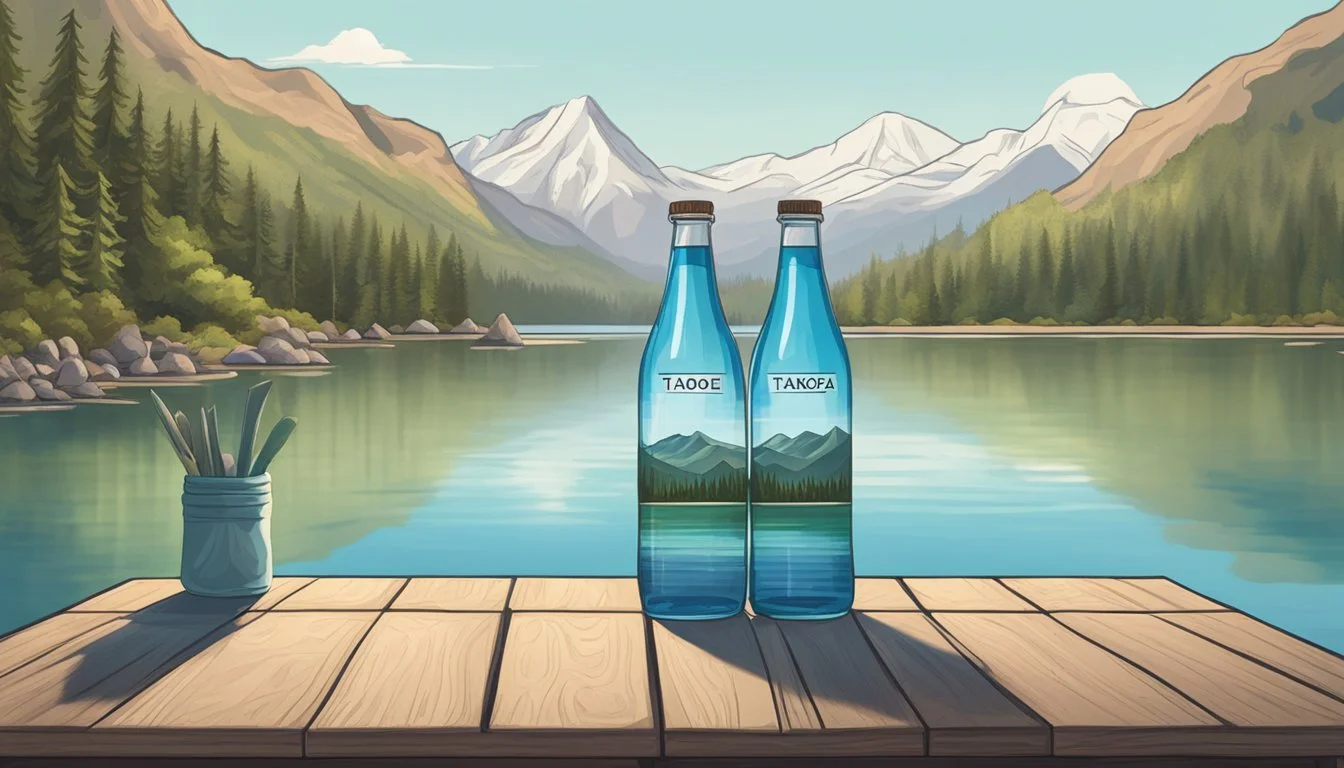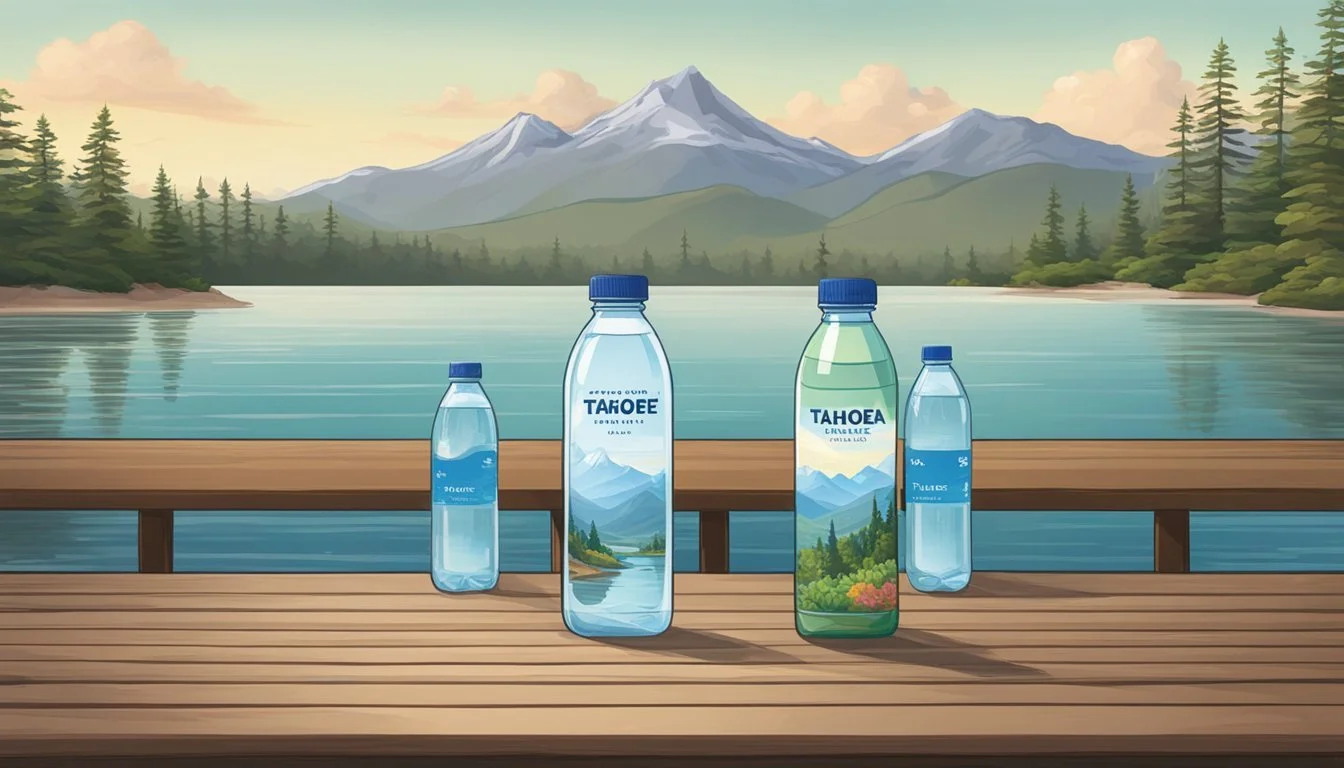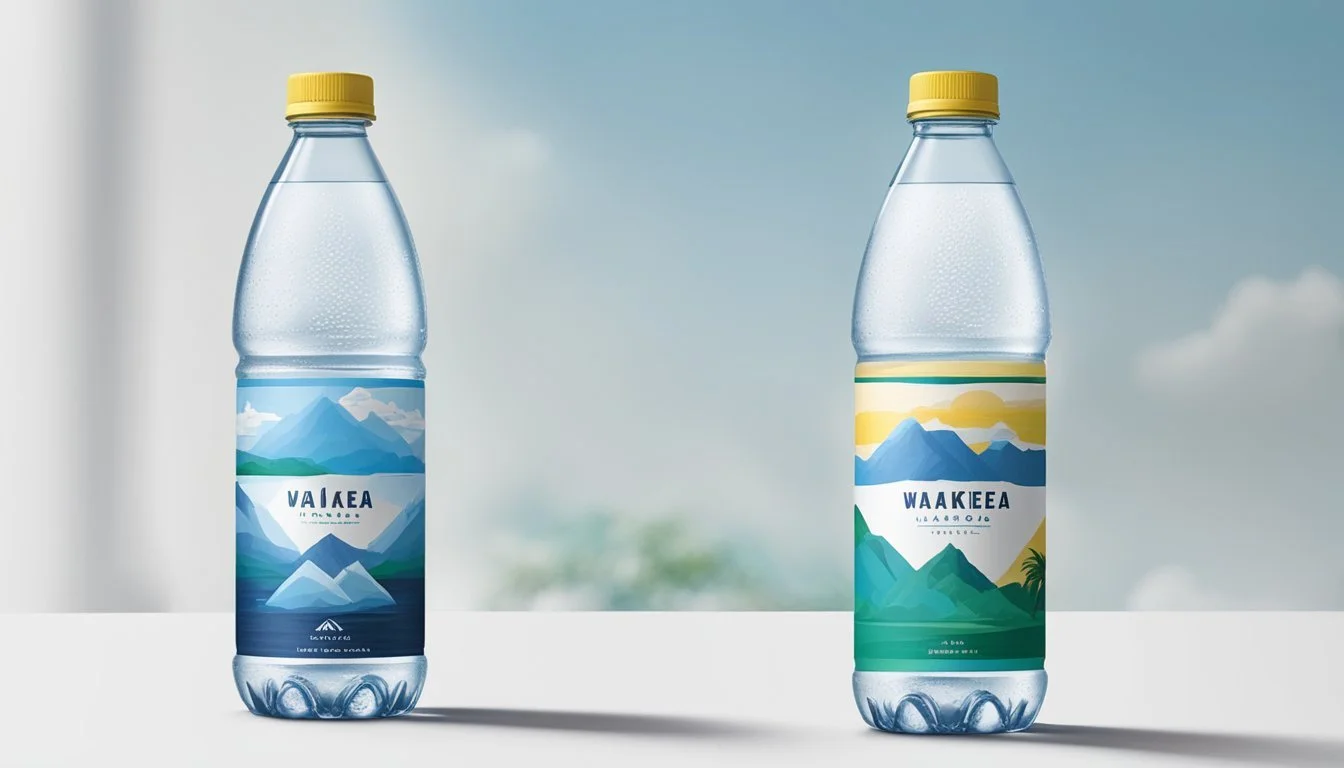Tahoe vs. Waiakea
Comparing Quality, Taste, and Purity
When it comes to selecting the best bottled water, Tahoe and Waiakea stand out as two premium brands with distinct characteristics. Tahoe's water is known for its pristine purity, sourced from the remarkable springs in California and nearby states, ensuring a refreshing and clean taste. Waiakea, on the other hand, offers an exotic flair by sourcing its water from snowmelt and rain that filters through 14,000 feet of volcanic rock, resulting in a unique mineral composition and a naturally alkaline pH.
For those who prioritize mineral content and natural filtration processes, Waiakea's volcanic water provides a compelling option. Its alkaline nature is often favored for potential health benefits, and the brand’s commitment to sustainability adds appeal. Tahoe delivers a reliable option for those who appreciate a balanced taste with minimal processing, drawn from some of the purest springs available.
Both brands emphasize their dedication to purity and quality, yet they diverge significantly in sourcing and taste profiles. Choosing between Tahoe and Waiakea ultimately depends on personal preferences for mineral content, water source, and filtration method. Whether it’s the volcanic allure of Waiakea or the classic purity of Tahoe, both offer excellent choices for discerning bottled water consumers.
The Rise of Bottled Water
The rise of bottled water has transformed an essential commodity into a global industry. Key players like Tahoe Water and Waiakea Hawaiian Volcanic Water highlight the diversity in sourcing and quality that consumers now expect.
Tahoe Water Origins
Tahoe Water is sourced from natural springs in the Lake Tahoe region. These springs are known for their exceptional purity, benefiting from the pristine environment of the Sierra Nevada mountains. Unlike many commercial brands that rely heavily on filtration processes, Tahoe Water maintains much of its natural mineral content.
Tahoe Water's appeal lies in its minimal processing. Collected directly from the source, this spring water reflects the characteristics of the local geology. As a result, consumers can enjoy water that tastes fresh and clean without additional enhancements.
Key Points:
Source: Natural springs in the Lake Tahoe region.
Quality: High purity due to the pristine Sierra Nevada environment.
Processing: Minimal, preserving natural minerals.
Waiakea Hawaiian Volcanic Water
Waiakea Hawaiian Volcanic Water is another standout, sourced from the slopes of the Mauna Loa volcano in Hawaii. This water begins as rain and snowmelt, which filter through thousands of feet of porous volcanic rock. This natural filtration process imparts a distinct mineral composition, contributing to Waiakea’s unique taste and higher pH level.
In addition to its volcanic origins, Waiakea is notable for its commitment to sustainability. The company uses eco-friendly practices, including bottling in recycled materials and supporting clean water access in developing countries. Waiakea’s focus on environmental responsibility and quality differentiates it in the crowded bottled water market.
Key Points:
Source: Slopes of the Mauna Loa volcano.
Filtration: Natural via volcanic rock, resulting in a distinct mineral composition.
Sustainability: Use of eco-friendly practices and support for global clean water initiatives.
Processing and Purity
When comparing Tahoe and Waiakea bottled waters, the methods used for filtration and overall purity play crucial roles. This section will cover how each brand processes its water and achieves its level of purity.
Filtration and Purification Processes
Tahoe Water undergoes a series of filtration steps to ensure cleanliness and safety. This includes carbon filtration to remove chlorine and organic compounds, and reverse osmosis to eliminate a wide range of contaminants. This extensive filtration process ensures Tahoe maintains high-stability, contaminant-free water.
Waiakea Water follows a different path, sourcing its water from volcanic rock filtration. Natural filtration through 14,000 feet of volcanic rock imparts beneficial minerals and electrolytes. Waiakea then often performs micro-filters and ultraviolet light treatments to uphold high purity standards, focusing on maintaining naturally occurring benefits.
Purity and Total Dissolved Solids
Total Dissolved Solids (TDS) measure the concentration of dissolved substances in water, influencing taste and safety.
Tahoe Water typically records a TDS level between 30-50 ppm, indicating high purity with minimal dissolved substances. The thorough filtration process significantly reduces contaminants, ensuring clear and clean water that preserves its natural taste.
Waiakea Water features a TDS level around 60-80 ppm, attributed to its natural mineral content from volcanic rock filtration. This process enriches the water with essential minerals like calcium and magnesium, contributing to Waiakea’s distinct, smooth taste and health benefits.
Health and Hydration
Tahoe and Waiakea bottled waters boast unique compositions that contribute to their health benefits and hydration effectiveness. Both variants infuse the body with vital minerals and maintain a balanced pH level, critical for overall well-being.
Mineral Content and Health Benefits
Tahoe water is rich in calcium and magnesium, which are essential for bone strength and muscle function. Calcium ensures robust bone health, reducing the risk of osteoporosis. Magnesium aids in muscle relaxation, preventing cramps and supporting cardiovascular health. These minerals are crucial for those seeking to enhance their dietary intake.
Waiakea water, sourced from the Mauna Loa volcano, stands out with its silica content. Silica promotes healthy skin, hair, and nails, making it popular among health enthusiasts. It also contains electrolytes, such as potassium and sodium, helping maintain proper fluid balance and preventing dehydration. Waiakea’s alkaline minerals add extra health benefits that appeal to those conscious of their nutrient intake.
Hydration and pH Levels
Tahoe water provides effective hydration with a neutral to slightly alkaline pH, typically ranging from 7.0 to 7.5. This balance is ideal for those who prefer mild alkaline water without dramatic pH shifts. The presence of electrolytes in Tahoe water ensures quick and efficient rehydration, making it suitable for athletes and active individuals.
Waiakea water features a natural alkaline pH of about 8.2, which helps neutralize acidity in the body. A higher pH level can benefit those experiencing acid reflux or gastrointestinal issues. The natural alkalinity supports pH balance and overall hydration. Due to its volcanic origins, Waiakea water often has a more pronounced alkaline taste, which some consumers find refreshing.
Both water brands exhibit unique properties tailored to different health and hydration needs, making them strong contenders in the bottled water market.
Taste and Texture Comparison
When comparing Tahoe and Waiakea bottled water, taste and texture play pivotal roles.
Tahoe Water:
Appears crystal clear with a fresh, crisp taste.
Reports indicate a remarkably smooth texture on the palate.
Known for its refreshing taste that quells thirst efficiently.
Has a slightly sweet undertone, making it distinguishable from other brands.
Waiakea Water:
Offers a taste that hints at volcanic origins.
The texture feels silky and quenches thirst with a refreshing taste.
Naturally alkaline, providing a unique mineral flavor that many find appealing.
Soft on the palate without any sharpness, making it gentle yet effective.
Both brands aim to deliver a high-quality drinking experience that caters to different preferences.
Environmental Impact and Sustainability
The environmental practices and sustainability initiatives of bottled water brands have become critical factors for consumers who prioritize eco-friendly choices.
Packaging and Carbon Footprint
Waiakea uses high-grade 100% rPET (post-consumer recycled PET) for its bottles. This material significantly reduces environmental impact compared to traditional plastic, using 85% less energy in manufacturing and decreasing carbon emissions by 79%. Their bottles are also BPA-free, further emphasizing their commitment to health and the environment.
On the other hand, Tahoe Bottled Water primarily uses standard PET plastics. While Tahoe has made efforts to recycle and reduce waste, the lack of comprehensive sustainability measures in their packaging increases their overall carbon footprint. Consumers looking for a more environmentally friendly option may favor Waiakea due to their innovative packaging solutions.
Sustainable Practices and Community Impact
Waiakea advocates for sustainable practices and is the first US bottled water brand to achieve Carbon Neutral certification. They utilize less than 0.003% of the volcano’s sustainable yield, ensuring minimal impact on natural resources. Additionally, Waiakea donates over 5% of their revenue to nonprofit organizations, positively impacting communities in Hawaii and globally.
Tahoe Bottled Water has initiated several sustainability programs, including local watershed protection and educational outreach about water conservation. These programs demonstrate a commitment to community impact. However, their initiatives do not present the same global reach or comprehensive sustainability efforts as Waiakea, reflecting a more localized approach to environmental stewardship.
Economic Considerations
Tahoe and Waiakea bottled water brands each present unique financial pros and cons for consumers. The cost and availability of these brands can significantly impact a buyer's decision.
Cost Analysis
Tahoe bottled water generally comes at a premium price due to its minimal processing and high-quality sourcing from the Lake Tahoe area. The cost per bottle tends to be higher compared to other standard brands.
Waiakea, sourced from volcanic rock filtration, is also on the higher end of the price spectrum. The additional steps in filtering and maintaining purity add to the cost.
An effective cost comparison between these brands is depicted as follows:
Brand Average Price per Bottle Tahoe $2.50 - $3.00 Waiakea $2.75 - $3.25
While prices can vary based on the retailer and purchase location, both brands are positioned as premium choices in the bottled water market.
Availability and Convenience
Tahoe water is predominantly available in regions close to its sourcing area, primarily in California and Nevada, but can be found in specialty grocery stores nationwide. This limited distribution can make it less accessible to some consumers.
Waiakea boasts a broader national and even international distribution network. It is available in many major grocery stores and online platforms, making it more convenient for a diverse customer base.
Both brands, while high-quality, have different levels of market penetration. Tahoe's regional focus contrasts with Waiakea's national availability, affecting consumer convenience.
Comparative Analysis of Water Brands
When comparing Tahoe and Waiakea bottled waters, several factors come into play, including brand reputation, consumer preference, and the different varieties of bottled water each brand offers.
Brand Reputation and Consumer Preference
Tahoe Water is recognized for its crisp, refreshing taste, attributed to its source in the Sierra Nevada mountains. Known for its dedication to environmental sustainability, Tahoe uses eco-friendly bottling practices.
Waiakea, sourced from Mauna Loa volcano in Hawaii, boasts volcanic filtration that gives it a unique mineral profile. Consumers often highlight its naturally high pH of 8.8, which is marketed as promoting better hydration due to its alkalinity. Waiakea is also committed to sustainability, using 100% recycled bottles and practicing ethical sourcing.
Bottled Water Varieties
Tahoe primarily offers spring water, appreciated for its natural taste and minimal processing. This brand capitalizes on the pure and unprocessed nature of its water, appealing to consumers seeking natural hydration.
Waiakea offers naturally alkaline water with volcanic origins, differentiating it from other brands by its mineral content and high pH level. This water is rich in electrolytes such as potassium, calcium, and magnesium, potentially enhancing hydration and promoting health benefits.
Unlike brands like Essentia and Core, which use ionization and reverse osmosis to create bottled alkaline water, Waiakea’s unique filtration process naturally boosts its alkalinity. In comparison to brands like Pure Life and Dasani, which offer purified water options, Waiakea’s volcanic water provides distinctive qualities not found in typical purified or mineral waters.
Scientific Perspectives and Expert Opinions
Experts critically assess Tahoe and Waiakea based on their mineral content, composition, and health benefits. Comparing pH levels, alkalinity, and overall flow characteristics helps in understanding how these waters affect hydration and body pH balance.
Tahoe water, sourced from natural springs, is often valued for its clear flow and moderate mineral content. Laboratories test and confirm its pH levels, often slightly acidic to neutral.
Waiakea, on the other hand, is renowned for its alkaline water properties. With a pH typically around 8.2 to 8.8, it offers an alkaline profile that some experts believe can neutralize body acidity and improve hydration.
Based on the Environmental Protection Agency (EPA) guidelines, both brands meet standard safety and quality benchmarks. Waiakea's alkalinity and essential minerals, like calcium and magnesium, offer significant health benefits according to expert testimonials and lab analyses.
Comparatively, Fiji Water is often brought up in discussions about quality bottled water. Like Waiakea, it is sourced from pristine environments and boasts a balanced mineral profile, though its pH is closer to neutral.
Tahoe, though, stands out for its sourcing from protected natural springs and a consistent mineral-rich flow, which are highly valued in scientific circles. Highlighting sustainability and eco-friendly practices, Waiakea also scores points for lower environmental impacts.
Consumer Safety and Regulatory Standards
Ensuring bottled water safety involves adhering to strict guidelines and addressing contaminant concerns. Key factors include the regulation of bottled water and the measures in place to control contaminant levels.
Bottled Water Regulations
Bottled water in the United States is primarily regulated by the Food and Drug Administration (FDA). The FDA's standards align closely with those set by the Environmental Protection Agency (EPA) for tap water, ensuring a consistent safety benchmark.
Tahoe and Waiakea must follow these federal regulations. This involves regular testing for contaminants such as lead, fluoride, and chlorine. Additionally, the labels must accurately reflect water sources, whether it be groundwater or other origins.
State-level regulations can also impose stricter standards. Water bottlers engage in frequent testing to meet these requirements, addressing potential health concerns and preventing issues like acid reflux caused by high acidity.
Contaminant Levels and Safety Measures
Contaminant levels in bottled water are a major concern for consumers. Recent tests on various brands, including Waiakea, have identified issues such as toxic PFAS chemicals. These findings underscore the need for rigorous safety measures.
Total dissolved solids (TDS), a key quality indicator, must be controlled. Brands like Tahoe and Waiakea aim to maintain low TDS levels to ensure purity. Routine checks are made for other contaminants too, including microbial and chemical additives.
Recall incidents, such as those with Waiakea due to floating particles, highlight the importance of stringent quality control. Bottlers often implement advanced filtration systems and thorough quality checks to meet these safety standards. This ensures the final product is safe for consumption, supporting consumer health and trust.
More About Tahoe
Mountain Valley Spring Water vs Tahoe: Which Bottled Water is Better?
Tahoe vs Richard's Rainwater: Which Bottled Water is Better?
Tahoe vs Whole Foods Italian Still Mineral water: Which Bottled Water is Better?
More About Waiakea
Icelandic Glacial vs Waiakea: Which Bottled Water is Better?
Mountain Valley Spring Water vs Waiakea: Which Bottled Water is Better?
Waiakea vs Kirkland Signature: Which Bottled Water is Better?
Waiakea vs Richard's Rainwater: Which Bottled Water is Better?
Waiakea vs Whole Foods Italian Still Mineral water: Which Bottled Water is Better?







